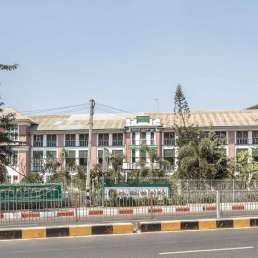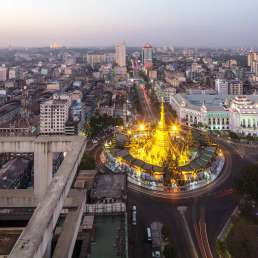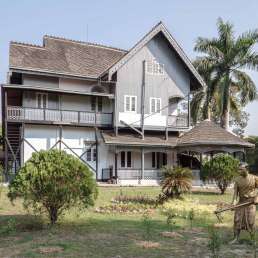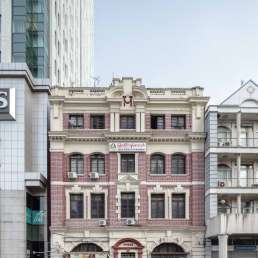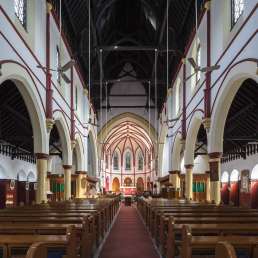Formerly: AFPFL Headquarters
Address: 8 Komin Kochin Road
Year built: 1920s
Architect: Unknown
Off a short, sloping driveway stands this stately villa from the early 1920s. Judging by its overall appearance, the building was probably commissioned by a European—what we do know for certain is that a wealthy Chinese businessman, Chan Chaw Paing, acquired it shortly after its completion and added a number of Chinese characteristics. Chan Chaw Paing’s wife was none other than Lim Chin Tsong’s daughter. (Read more about the larger-than-life tycoon in the section about the Lim Chin Tsong Palace.) The villa was largely built from stone and steel and is hence in decent structural condition today. Goethe-Institut, the international German cultural organisation, has leased the property as a base for its growing activities in Myanmar. A full-scale renovation is planned, which will see the building restored to its former glory while becoming a multi-functional cultural space. It will also host a courtyard restaurant.
The residence is set back from the street, at a good distance from the noisy thoroughfare. The exclusive feel of the villa is accentuated by the large porte-cochère in front of the main entrance. Inside the building, one finds details revealing the second owners’ roots. There are Chinese characters on the entrance’s half-round transom. The teak room dividers are also clearly Chinese. Above the porte-cochère, a generous balcony overlooks the leafy yard and beyond the tall palm trees, the tip of the Shwedagon Pagoda comes into view. On the second floor, a light well provides natural lighting to the spacious hallway connecting all rooms.

The villa is a typical example of a wealthy residence built in this period. Colonial Rangoon was booming in the 1920s, leading to a lot of construction activity. Not much is known of its owners’ later life. It can only be speculated that Chan Chaw Paing and his wife left Yangon with the onset of the war, before or during the Japanese invasion in early 1942. This was the case of many other ethnic Chinese residents who often crossed the land border into Yunnan province. Thousands decided to return to Burma after the war. They rebuilt their communities in Chinatown, where about a quarter of the housing stock was destroyed during war-time bombing. Many, however, did not come back. Perhaps they were lost in the vagaries of war, or found their fortunes elsewhere.
The real historical significance of the Villa Goethe stems from its use at the end of the war and the immediate post-war period. General Aung San and the Thakins, or nationalist Burmese leaders, chose this building as the headquarters of their Anti-Fascist Organisation (AFO). The AFO was renamed the Anti-Fascist People’s Freedom League (AFPFL) after the war. It became the main political party working for Burmese independence. Under the leadership of General Aung San, it united the various factions into which Burma’s independence fighters had by then split. It is said that General Aung San even lived in the building for some time, in the annex at rear of the building. After his assassination, followed by independence, the AFPFL became the young country’s main political party. Its leader U Nu was the country’s prime minister for much of the immediate post-independence period. The group’s headquarters were here, on what was then Churchill Road (now Kaba Aye Pagoda Road and its southern prolongation called Komin Kochin Road). The place remained a centre of Burmese political life until the liquidation of the AFPFL under General Ne Win in 1962.
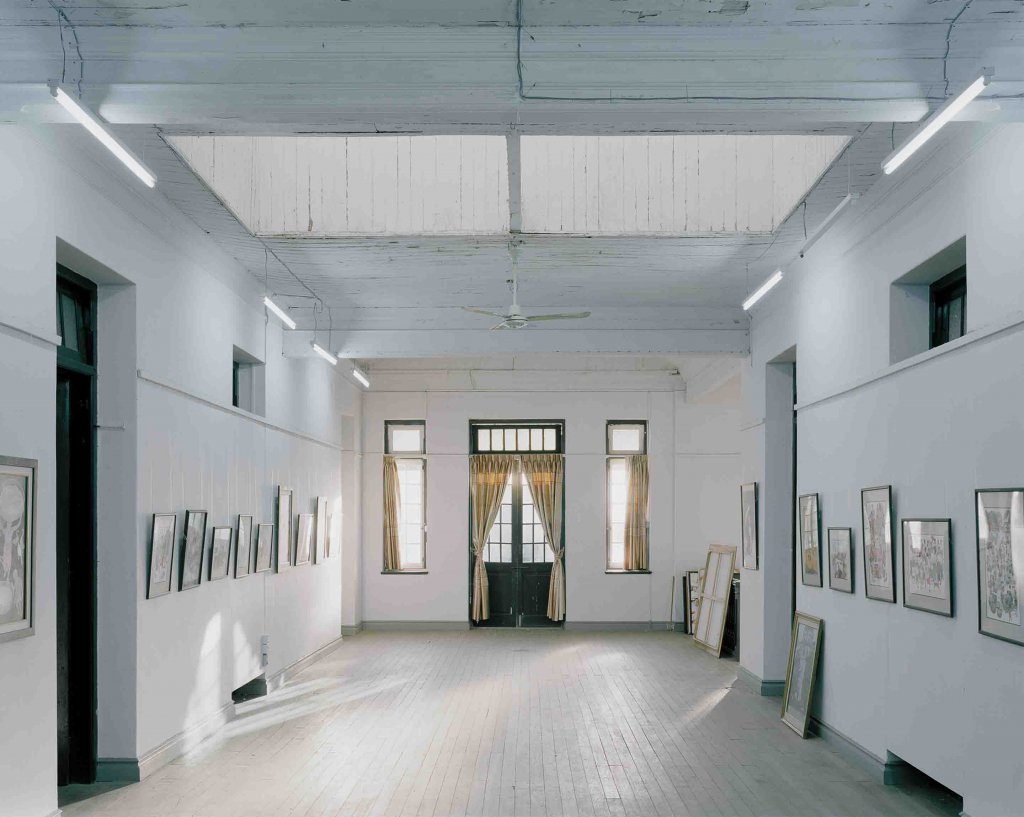
Around 1968, the building became the State School of Fine Arts and served as such until 2003. From that point, the former AFPFL headquarters was used for occasional art exhibitions organised by the Ministry of Culture. But the building gradually fell into disrepair and Cyclone Nargis in 2007 caused further damage. Thanks to some basic repairs led by the Myanmar Artists and Artisans Organisation, art continued to be shown here.
The Goethe-Institut was offered the property by the Ministry of Culture during negotiations on a cultural agreement between Myanmar and Germany. The house’s historic aura, inviting location and beautiful grounds seduced the Institut immediately. The lease agreement was approved by President Thein Sein’s cabinet in early 2015.
The building was inaugurated by German President Joachim Gauck during a state visit in February 2014. The Goethe-Institut in Yangon offers German language classes at all levels and facilitates cultural exchanges between Germany, Myanmar and the world. With this new venue in the old villa, the institute also aims to provide young Burmese artists with a space for innovative forms of expression and creative experiments. It also offers training programmes and support for young people in the fields of music and film, as well as workshops about the use of media in education.
This book was made possible thanks in part to the Goethe-Institut’s generous support.
